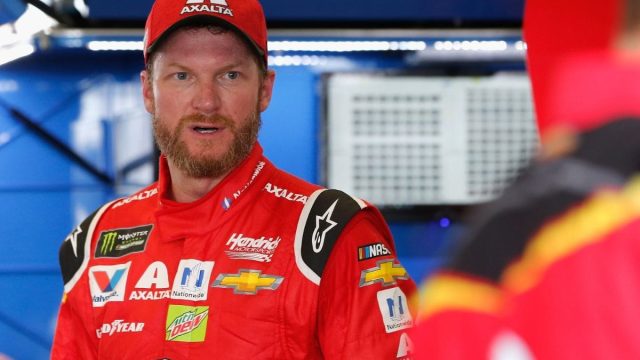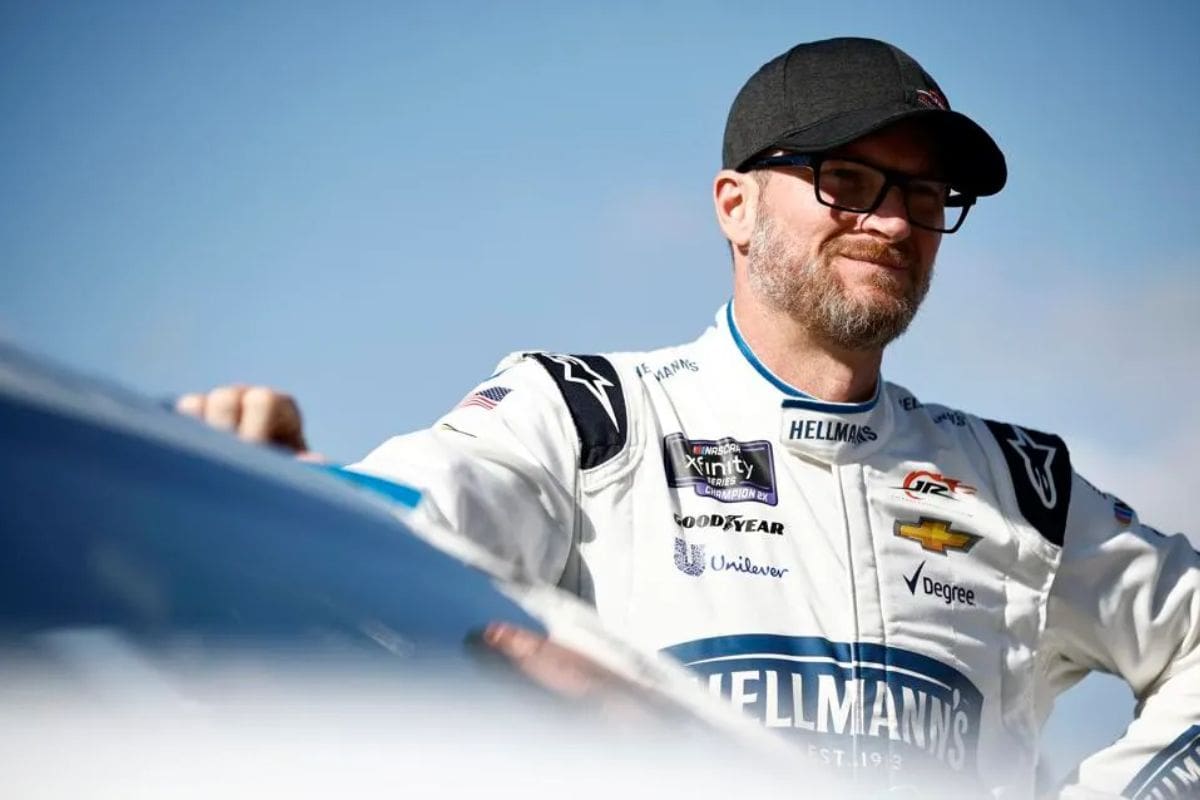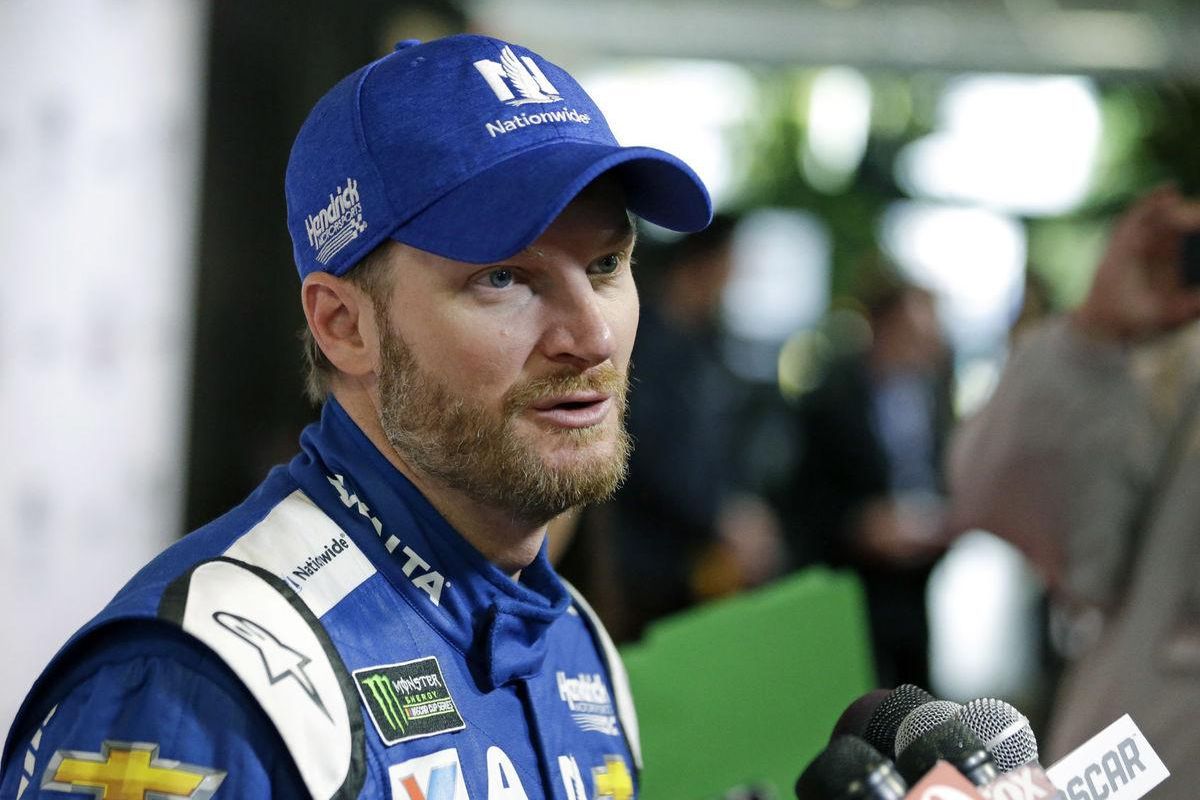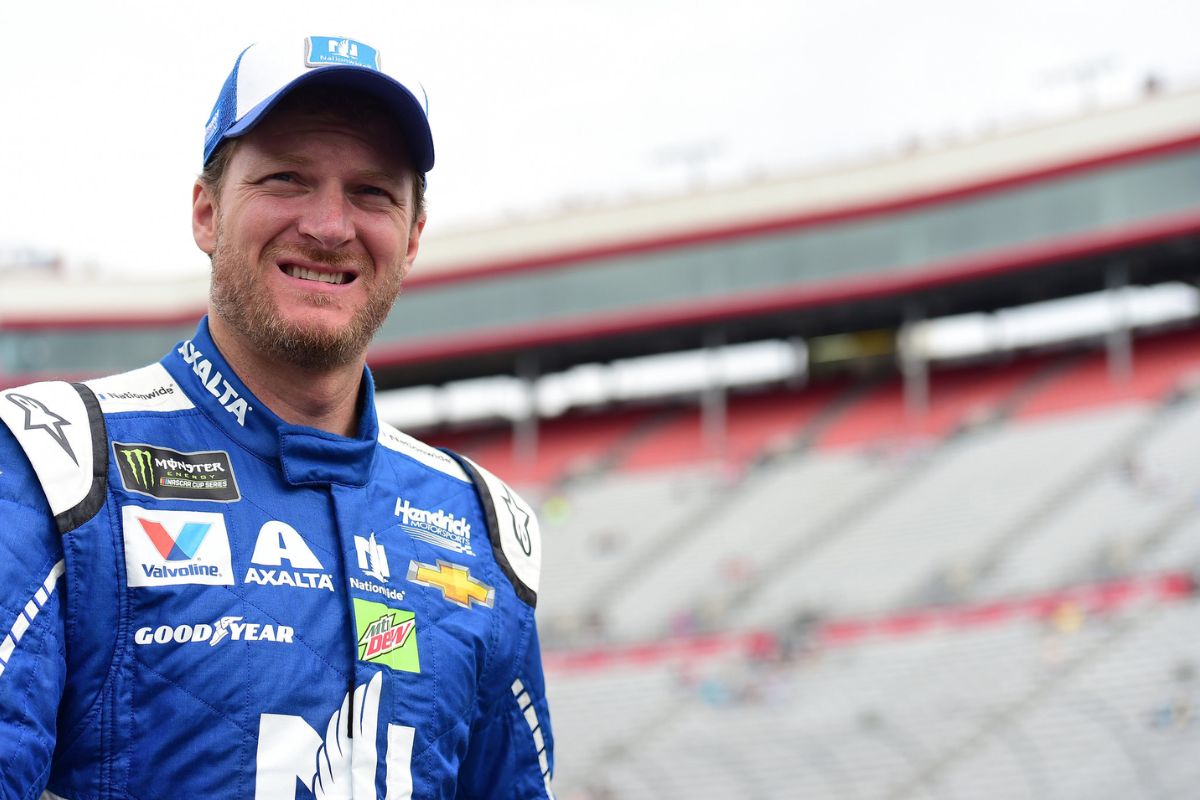Dale Jr Urges NASCAR to Revamp Dover and Bristol: Dale Earnhardt Jr.‘s recent demand for changes at iconic NASCAR tracks like Dover and Bristol has reignited discussions within the racing community, highlighting the changing dynamics and fan expectations in the sport. Earnhardt Jr. pointed to the shift from asphalt to concrete surfaces as a key factor in diminishing excitement and altering tire wear and grip levels. By emphasizing a potential return to asphalt, he shows the importance of preserving the inherent unpredictability and excitement that have historically defined NASCAR.
Key Highlights
- Earnhardt Jr. demands for resurfacing Dover and Bristol with asphalt to enhance race excitement and unpredictability.
- He criticizes the shift to concrete surfaces for negatively impacting tire wear, grip levels, and racing quality.
- Asphalt tracks historically offer dynamic racing strategies and more frequent overtakes, enhancing spectator enjoyment.
- Concrete surfaces have led to more predictable races and fewer overtaking opportunities, reducing the thrill for fans.
- Resurfacing with asphalt is seen as a way to revive fan interest and preserve the tracks’ storied NASCAR legacies.
Dale Jr.’s Critique of Dover and Bristol
Dale Earnhardt Jr. has voiced significant concerns about the declining excitement and quality of racing at Dover and Bristol, highlighting the impact of changes to the tracks’ surfaces on his podcast, the Dale Jr. Download. He reminisced about the era when these tracks featured asphalt surfaces, which he believes contributed substantially to the thrilling nature of the races.
Earnhardt Jr. detailed how the shift from asphalt to concrete at Dover and modifications at Bristol have diminished the unpredictability and competitive edge that once defined these venues.
The alterations, according to Earnhardt Jr., have led to a more uniform racing experience, reducing variability and the spectacle that drew fans in droves. The asphalt surfaces were known for their dynamic interaction with different racing strategies and car setups, fostering a more engaging and uncertain race environment.
Furthermore, Earnhardt Jr. emphasized that the current state of these tracks does not challenge drivers in the same manner as the original conditions did. He observed that the degradation of asphalt provided a unique test of skill, where tire management and adaptability played critical roles.
The concrete surfaces, on the other hand, have led to a more static racing dynamic, where the outcome is less influenced by the subtle decisions made by drivers and their crews.
Dale Jr.’s Fondness for Steep Banking and Short Tracks
Earnhardt Jr.’s profound admiration for steep inclines and short tracks stems from his belief that these characteristics inherently intensify and elevate the excitement and competitiveness of NASCAR racing. He has frequently emphasized how Dover’s and Bristol’s distinct features create a racing environment where driver skill and strategy are paramount.
“Dover and Bristol. Those two race tracks are great tracks, I’m a big fan of both. They have two things that I love about a race track, and one of them is very steep, steep banking, and they’re relatively short. Dover’s a mile, and Bristol’s a half-mile.” – (dale jr.)
As a seasoned driver, he appreciates how the steep inclines allow for higher speeds and more varied racing lines, while the shorter track lengths guarantee that drivers are consistently in close proximity, leading to frequent overtakes and heightened viewer engagement.
“So, usually the steep banking is reserved, at least back in — when I was much, much younger, the steep banked race tracks in NASCAR were reserved for the mile-and-a-halves and Daytona and Talladega, so having a very steep banked short-track was very compelling.” – (dale jr.)
During his tenure in NASCAR, Earnhardt Jr. experienced firsthand the thrill generated by these tracks. Dover, often referred to as the ‘Monster Mile,’ and Bristol, known for its coliseum-like ambiance, have consistently delivered some of the most exhilarating and unforgettable races in the sport’s history.
Earnhardt Jr. believes that these tracks bring out the finest in drivers, requiring precision, rapid decision-making, and a profound understanding of car dynamics.
Furthermore, the steep inclines at these tracks help to maintain high levels of grip, enabling cars to navigate corners at increased speeds. This aspect, combined with the shorter lengths, compels drivers to remain constantly vigilant, making every lap a test of endurance and skill.
Transition to Concrete Surfaces
In response to persistent issues with track deterioration, the decision to convert Dover and Bristol from asphalt to concrete surfaces has been met with significant criticism from Earnhardt Jr. The legendary driver has not shied away from expressing his discontent, drawing attention to the numerous problems that have emerged since the change.
“Bristol, when it was asphalt, was magic. It seemed like it was something that you would never be able to replicate. There were insane, insane races, on that asphalt. Now, when they went to concrete, because they had a lot of problems with the track tearing apart.” – (dale jr.)
He noted that the switch was initially prompted by recurrent issues with asphalt degradation, which necessitated frequent repaving efforts and ultimately led to the decision to employ concrete as a seemingly more durable alternative.
“They had a repave. They ran the next weekend after the repave. Rather warm conditions. They raced the Xfinity race during the day, and cars were tearing up the race track during practice and during the Xfinity race. Just a lot of problems. So, they just said screw it, ‘We’ll concrete this race track.” – (dale jr.)
Earnhardt Jr. has been vocal about the challenges introduced by concrete surfaces. He argues that while concrete may offer longevity and resistance to wear, it fundamentally alters the dynamics of racing, impacting everything from tire wear to the race’s entire strategy.
“They did the same thing at Dover. Repaved Dover. Had a lot of problems with the track tearing up. Big holes, loose gravel, big problems, and they said, ‘You know what, screw it, we’ll concrete it.’” – (dale jr.)
His concerns are particularly acute for tracks like Dover and Bristol, which are renowned for their unique characteristics and the specific style of racing they foster. Earnhardt Jr. fears that the concrete surfaces have detracted from the distinct qualities that made these venues fan favorites.
“So I hated that. I hated that they took those two race tracks, that were super, incredible, magical race tracks, and put concrete down, and they’ve never been the same ever since.” – (dale jr.)
Moreover, Earnhardt Jr. highlights the unintended consequences of the change. He points out instances where the concrete surfaces have led to unforeseen complications, such as changes in grip levels and increased stress on both the vehicles and drivers.
Comparison Between Asphalt and Concrete
When comparing asphalt and concrete surfaces, it becomes evident that each material presents distinct advantages and challenges that greatly influence the dynamics of NASCAR racing.
Asphalt, widely recognized for its smooth and consistent texture, offers a racing surface that allows for predictable handling and tire wear. This uniformity is pivotal for drivers who rely on steady grip levels and minimal surface variability to maintain high speeds and execute precise actions.
“I know, I can go to Nashville, and I can go to Dover and I can go to Bristol and I can see an amazing race there today. We will. We’ll see great races at those race tracks. But I know where the potential is, as they were asphalt. I know how much we’re missing.” – (dale jr.)
Conversely, concrete surfaces, as highlighted by Earnhardt Jr., tend to develop bumps and imperfections over time due to their construction. The inherent rigidity of concrete means that it does not flex or absorb impacts in the same manner as asphalt, leading to the formation of irregularities.
“Concrete, when you pave a race track or a strip of road or anything, it’s consistent, smooth. There may be some bumps or imperfections, but it’s one strip, one ribbon of asphalt, all the way around. When you concrete anything, you have to grind, or cut these cracks in it, to allow it to expand and contract with its temperature throughout the year, or else it will crack and bust, right?” – (dale jr.)
These imperfections can notably affect the quality of racing, introducing variables that drivers must constantly adapt to, thereby influencing tire performance and car stability.
“So those joints, sort of bow up, like an untreated deck on a house. If you’ve ever drove on a stretch of interstate that’s concrete, your cars like bouncing over these bumps. That’s the way the cars go around a concrete race track.” – (dale jr.)
Concrete’s durability, however, is a notable advantage. It withstands extreme weather conditions better than asphalt and requires less frequent resurfacing, offering a long-term cost-effective solution for track maintenance. This durability is particularly beneficial in high-traffic areas like pit lanes and braking zones where surface integrity is paramount.
Call for Change and Future Outlook
NASCAR’s consideration of resurfacing Dover and Bristol with asphalt, as demanded by Dale Earnhardt Jr., aims to address the ongoing concerns about the detrimental impact of concrete on race dynamics and safety. Earnhardt Jr. has articulated that the shift to concrete has diminished the excitement traditionally associated with these storied tracks.
One of the primary arguments is that concrete surfaces tend to produce more consistent and predictable racing conditions. This predictability, while beneficial in some respects, often results in less variability in race outcomes and fewer opportunities for overtaking.
Asphalt, in contrast, is known for its evolving track conditions, which can notably influence race strategy and driver performance. This dynamic nature of asphalt racing is what many fans and drivers nostalgically recall as the essence of NASCAR’s golden era.
Furthermore, the call for resurfacing with asphalt is not just about enhancing entertainment value but also about improving safety. Concrete tracks can be harsher on tires, leading to increased wear and a higher likelihood of failures, which in turn raises the risk of accidents. Asphalt, with its relatively gentler impact on tires, could mitigate these concerns and contribute to safer racing conditions.
News in Brief: Dale Jr Urges NASCAR to Revamp Dover and Bristol
Dale Earnhardt Jr.’s demand for reverting to asphalt surfaces at Dover and Bristol highlights a critical examination of the impact that surface materials have on racing dynamics, including tire wear, grip, and general excitement.
The proposed changes aim to restore the unpredictable, thrilling nature of NASCAR races and improve fan engagement. Addressing these concerns is crucial for preserving the essence of NASCAR and maintaining the historical significance of these iconic tracks.
ALSO READ: Dale Earnhardt Jr. Defends Next Gen Car Amid Short Track Issues



